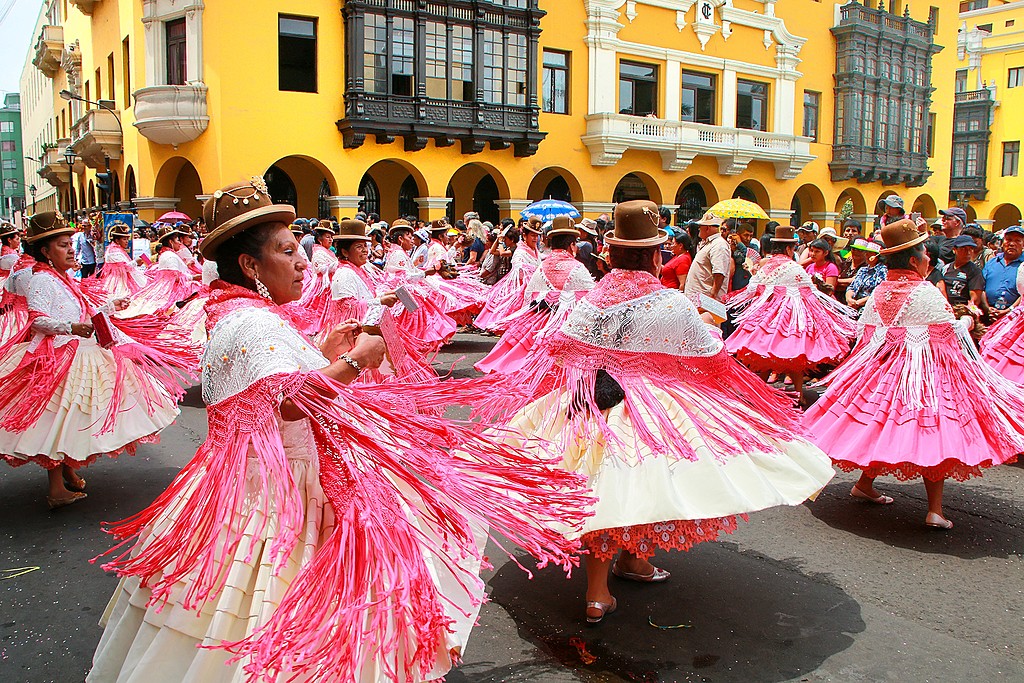
Peru’s rich history of the Inca entwined with influences from the Spanish colonial era have combined to create amazing festivals. Some of the festivals are religious and to be respected but are open for the enjoyment of everyone who visits Peru. This article includes some of the best festivals and where to find them.
| Festival | Summary |
| Inti Raymi | Festival of the Sun |
| Qoyllur Riti | Pilgrimage of the Bright White Snow |
| Sondor Raymi | Religious and Cosmo festival |
| Paucartambo | Patrimonial Festival |
Inti Raymi
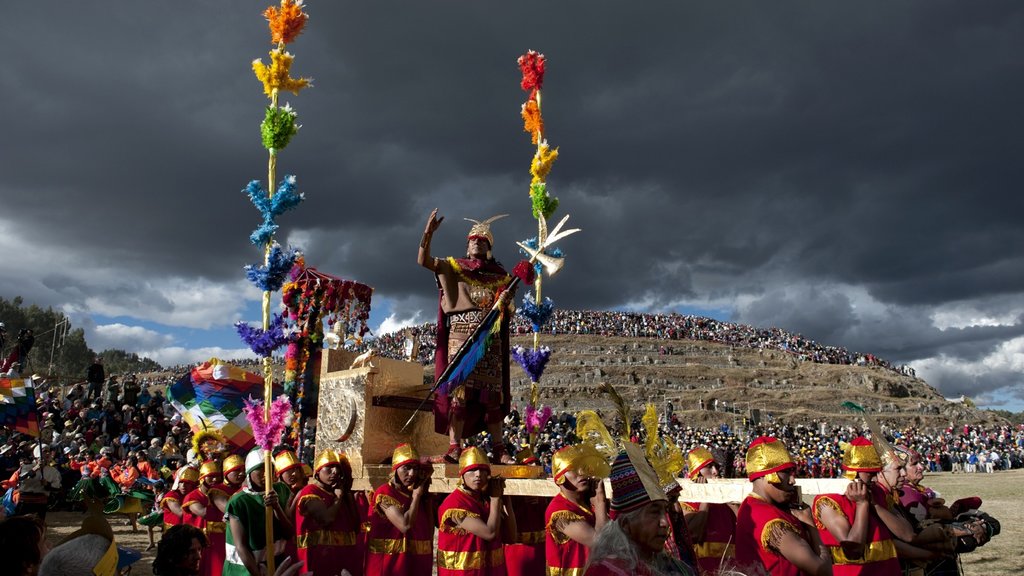
The magnificent Inti Raymi, a term derived from the Quechua language meaning “Sun Festival,” stands as a profoundly significant religious ceremony that harkens back to the era of the Incan Empire. This grand festival serves as a vibrant tribute to dios Inti, the Sun God, a deity held in the highest esteem and revered throughout the Incan religion. More than just a celebration, Inti Raymi is a powerful commemoration and festival marking the winter solstice – a pivotal point in the year representing the shortest day between sunrise and sunset, and simultaneously, the Inca New Year. The festivities traditionally occur on June 24th, a date deeply embedded in the cultural fabric of the region.
According to the renowned chronicler Inca Garcilaso de la Vega, Inti Raymi was, without a doubt, the most important of the four major Inca festivals celebrated annually in Cusco. The sheer scale and spiritual importance of this event underscored its central role in Incan society. The heart of the celebration unfolds in the Haukaypata, or the main plaza of the city. It’s in this vibrant and historically charged space that the energy of the festival truly comes to life.
Imagine the scene: the air thick with anticipation, the plaza teeming with people adorned in traditional garb, the sounds of ancient instruments echoing through the streets. Inti Raymi is a sensory explosion, a journey back in time, and a testament to the enduring power of Incan heritage. It is a spectacle that draws visitors from across the globe, eager to witness this awe-inspiring display of cultural pride and spiritual devotion. The festival is meticulously planned and executed, ensuring that every detail pays homage to the traditions and beliefs of the Incan people.
To witness Inti Raymi is to connect with the very soul of the Andes, to feel the pulse of history beneath your feet, and to be moved by the unwavering spirit of a culture that continues to thrive centuries after the fall of its empire. It is an experience that will leave an indelible mark on your memory, a story you will recount for years to come, and a powerful reminder of the rich tapestry of human history.
Qoyllur Riti
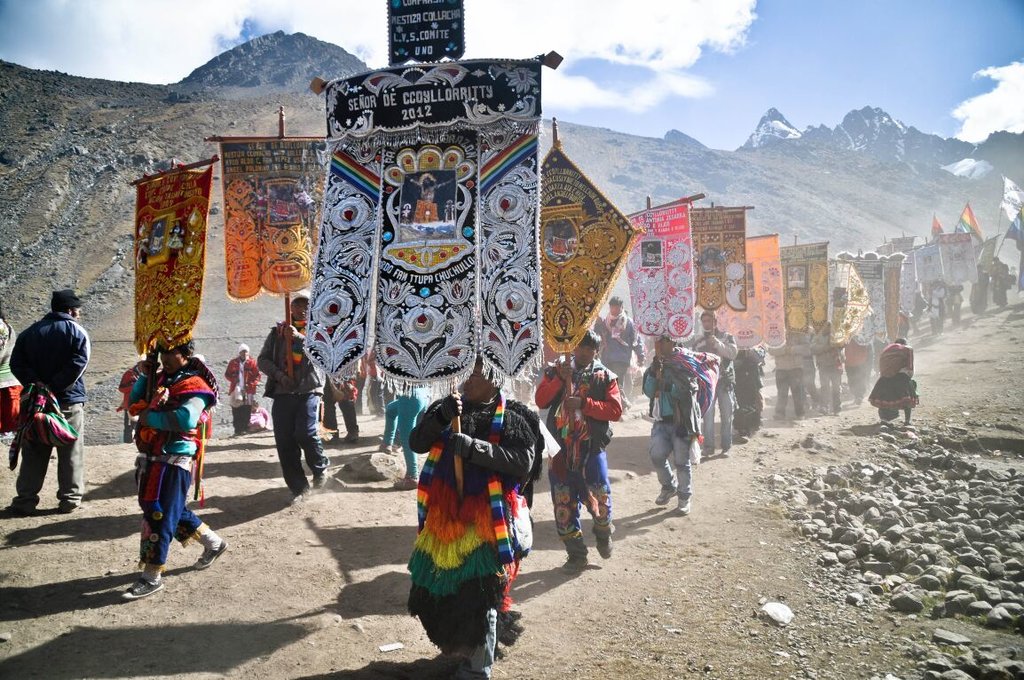
Qoyllur Riti, sometimes spelled Quyllurit’i, translates from Quechua as “bright white snow.” This spiritual festival is a truly remarkable event, held annually in the breathtaking Sinakara Valley, nestled within the southern Cusco Region of Peru. For the indigenous people inhabiting the surrounding Andean communities, this anniversary is far more than just a date on the calendar; it’s a deeply significant native celebration honoring the stars above, a time of reflection, connection, and spiritual renewal.
The festivities are intrinsically linked to the reappearance of the Pleiades constellation, known in Quechua as Qullqa, which translates to “storehouse.” This celestial event holds profound agricultural significance, as it is correlated with the imminent harvest and the arrival of the New Year. The disappearance of the Pleiades from view in April, followed by its reappearance in June, marks a crucial turning point in the agricultural cycle and a time for communities to come together and celebrate the bounty of the earth.
The turn of the year is recognized by the local districts of the Southern Hemisphere on the Winter Solstice in June. The importance of the Winter Solstice has been celebrated in these local districts for many years. This date also coincides with a Catholic festival, a testament to the blending of indigenous traditions and religious influences that have shaped the region’s cultural identity for centuries, possibly millennia.
The pilgrimage and associated events take place in the latter part of May or the early days of June, timed to coincide with the cycle of the full moon. This lunar connection further underscores the deep-rooted connection between the people, the land, and the cosmos. Typically, the events unfold a week before the Christian feast of Corpus Christi, creating a unique intersection of spiritual practices and beliefs.
Events during Qoyllur Riti characteristically include solemn processions of holy icons and vibrant dances that take place in and around the revered shrine of the Lord of Quyllurit’i. These acts of devotion and celebration create an atmosphere of palpable energy and spiritual fervor, drawing pilgrims from far and wide.
As the sun begins its ascent above the horizon, many thousands of people kneel in reverence, eager to greet the first rays of light. This moment of collective devotion is a powerful expression of faith and hope. The central event for the Church is carried out by Ukukus, mythical demigods who embark on a challenging climb over glaciers to reach Qullqipunku mountain. They return bearing crosses and blocks of ice, which are then placed along the road leading to the shrine, imbued with therapeutic and healing qualities.
Qoyllur Riti is an unforgettable experience, a journey into the heart of Andean spirituality, and a testament to the enduring power of faith and tradition. The Sinakara Valley becomes a crucible of devotion, where ancient beliefs and modern practices intertwine, creating a vibrant and deeply moving spectacle.
Sondor Raymi
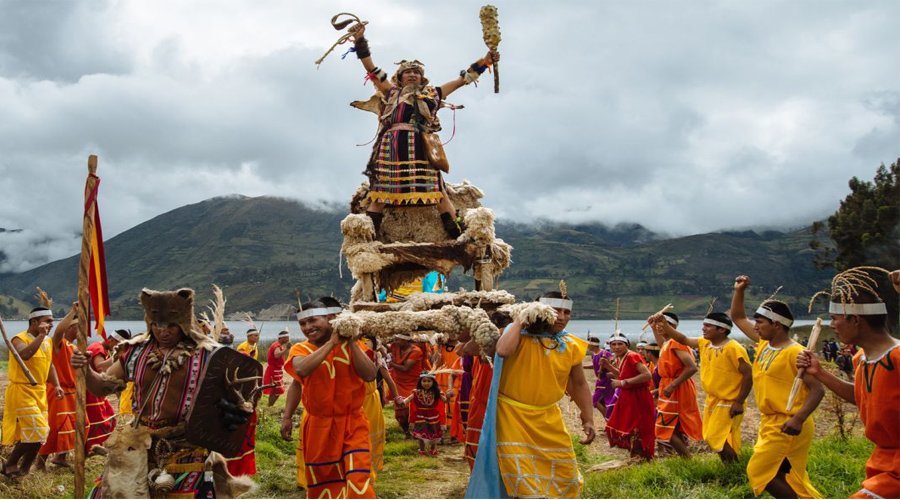
The essence of the Sondor Raymi fiesta lies in a temple-like structure, meticulously crafted and strategically positioned to serve both religious and astronomical purposes. This impressive edifice stands as a testament to the advanced knowledge and sophisticated understanding of the cosmos possessed by the ancient cultures of the region.
The Sondor Raymi festival, held in the Apurímac Region, specifically in Andahuaylas (located approximately 204 miles west of Cusco), begins at the picturesque Pacucha lagoon. Here, a captivating dramatization unfolds, depicting the origins and subsequent expansion of the Chanka people, a civilization that once held sway over this territory. According to the tapestry of legends woven through the ages, Usquwillca, a mythical figure who emerged from the depths of the lake, played a pivotal role in subjugating the local ethnic groups and initiating a campaign of military expansion that would reshape the region.
The festival then moves to the remarkable Sondor archaeological site, a place steeped in history and spiritual significance. At this location, a mystic-religious ceremony takes place, symbolizing both the servitude of the Quechua people and the eventual consolidation of the powerful Chanka Confederation. This ceremony serves as a powerful reminder of the complex interplay of power, culture, and religion that has shaped the region’s identity.
A journey to Sondor Raymi offers a wealth of enriching experiences. Begin by arriving in Andahuaylas, where you can embark on a visit to a local vineyard, where the tradition of fermenting wine with honey continues to thrive. Indulge in the unique flavors and aromas of this locally produced beverage. Then, immerse yourself in the therapeutic waters of the hot springs of Hualalachi, allowing the natural minerals to soothe and revitalize your body and mind. Consider incorporating an overnight community stay at the enchanting Bosque de Piedras, allowing you to connect with the local culture and experience the warmth and hospitality of the people.
The region of Apurimac is brimming with incredible sights and experiences beyond the festival of Sondor Raymi. This region will provide you with a deeper appreciation for the history, culture, and natural beauty of this captivating corner of the world. Every corner holds a new adventure and a fresh perspective, making it a truly unforgettable journey.
Virgen del Carmen in Paucartambo
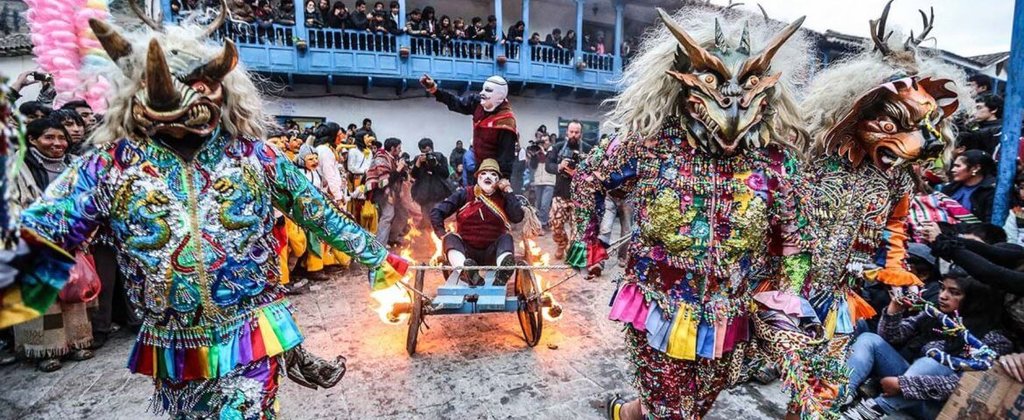
This original Andean patrimonial festival unfolds in the quaint and historically rich town of Paucartambo, a place characterized by its charming white-washed buildings adorned with vibrant blue doors and windows. The town is a visual delight, a living canvas that reflects the cultural heritage of the region.
Around the middle of July each year, campesinos (peasant farmers) from across the Sacred Valley undertake a pilgrimage to this small mountain town. Their destination: the festival of the Virgen Del Carmen, a celebration that embodies the spirit of the Andes. While many Andean towns host patrimonial festivals, characterized by traditional dances that blend indigenous beliefs, local legends, and Catholic worship, Paucartambo’s is widely considered the most historic and the best of them all. The atmosphere of exuberant celebration is infectious, drawing visitors from far and wide to partake in the festivities.
The fresh mountain air comes alive with the vibrant sounds of a dozen marching bands, their music resonating through the streets and filling the hearts of revelers. The sharp crackle of fireworks adds another layer to the sensory experience, creating a spectacle that is both exhilarating and awe-inspiring. The spirit of debauchery is contagious, encouraging visitors to embrace the joy and revelry of the occasion.
Over the course of the festival, each of the dance groups, resplendent in their full community regalia, enacts the stories of their existence. These performances are not mere entertainment; they are living narratives, passed down through generations, that recount the history, traditions, and beliefs of the Andean people. One group represents the wealthy landowners of Spanish descent, easily identifiable by their exaggeratedly large noses, spurs on their boots, and jugs of beer perpetually in their hands. Their portrayal is often satirical, a commentary on the social dynamics and historical tensions that have shaped the region.
Adding to the spectacle, a group of devils, their faces hidden behind elaborate Chinese dragon-style headdresses, scale the roofs of the town, playfully engaging with the crowds and tempting them to indulge in sin. These mischievous figures inject an element of playful chaos into the festivities, adding to the overall sense of excitement and revelry.
After a day of parading through the town, each dance group retreats to a large house or meeting hall, where they gather for a night of extravagant Andean cuisine and copious amounts of beer and pisco. These gatherings are a feast for the senses, with tables laden with traditional dishes and the air filled with the sounds of music, laughter, and animated conversation. The beer halls are packed to the rafters, with revelers spilling out of the doors and into the streets late into the night, their spirits lifted by the shared joy of the celebration.
For the brave of heart, an early morning excursion awaits, perhaps the most rewarding aspect of all the festivities. After an arduous climb through the piercing cold, fueled by bottles of rum passed around to ward off the chill, you’ll find yourself at Tres Cruzes, perched on the edge of the Andes. From this vantage point, you’ll witness a sunrise that explodes over thousands of miles of rainforest, a breathtaking spectacle that defies description. The festival-induced slumber is instantly shattered by this stunning mountain view and the overwhelming glory of the Amazon stretching out before you, a reminder of the immense beauty and power of the natural world.
B-2112
